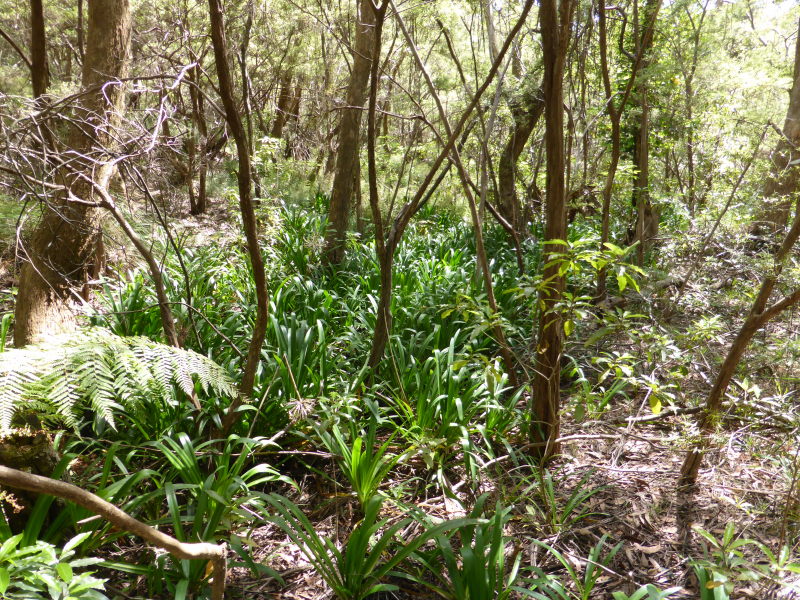The article below was submitted to the Blue Mountains Gazette in January.
- Agapanthus, the worst weed?
By Joe Goozeff
Agapanthus is the worst weed because of its severely detrimental impact on bushland and the difficulty with its eradication once it is established in the bush. How can you help? Deadheading!
Agapanthus are very popular plants in the Upper Mountains, with their large tuft of dark green shiny leaves and blue to purple or white flowers clustered in a large globular flower head, held high above the leaves on a stout shiny stalk up to 1 m high. Individual plants if left to spread can quickly form clumps, that over time can grow up to two metres or so in diameter and a metre in height.
Many people grow them as borders along fences, and on the road edge to define their nature strip, and while agapanthus are very effective as physical barriers, they do have disadvantages. They are a very aggressive plant, plant one and you will soon have a dozen. Leave them alone for a while and you will soon have huge clumps of them The rootballs of the clumps will expand into impenetrable masses, undermining paths, fences and building foundations close by.
The main problem is that their seeds are rapidly spread into bushland, and these seeds spread very easily, and the seeds produce new plants very easily. The seeds at the top of that long stem are spread by the wind and birds, and those seeds that fall to the ground can be carried by rainwater elsewhere. These seeds can travel long distances and produce many plants.
As an example of how they can spread, some years ago the Central Park Bushcare Group removed some agapanthus from an area of bush adjoining the Park in Wentworth Falls. There were dozens of plants growing in very poor soil in a small area of dense bush more than fifty metres from the nearest track. The agapanthus probably came from seeds carried by wind. In another case, in a plot of bush known as The Wild, off Fletcher Street in Wentworth Falls, the Charles Darwin Bushcare Group discovered a huge clump of agapanthus, some five metres across, where the stream flowing through the bush is slowed by a fallen tree and the agapanthus seeds washed down the stream from plants growing on the side of the road, have taken root.
Allowing seeds to disperse can cause major damage to native bushland, and when the seeds are carried by stormwater and creeks into the valleys, there will be damage to the National Park.
The best way to stop the seeds from spreading is to decorate your home with the flowers, and, when they are no longer decorative, put them in your green bin. Of course, if you have too many flowers you can remove the seed heads after the flowers have finished and put them in your green bin. You can use secateurs to do this, or cut the stalk off at the base with a small sickle. Small plants can be dug out. This should be done at the end of January.
If you wish to plant something instead of agapanthus, consider Blue Flax Lily (Dianella caerulea), Mat Rush (Lomandra longifolia), or Crinkle Bush (Lomatia silaifolia).
Joe Goozeff is the coordinator of the Jamison Creek Catchment Community Group. The Group meets regularly to plan activities, seek grants and make submissions on environmental and planning issues relevant to the Jamison Creek catchment. To find out more about the Group contact us at JCCCG@mail.com
You can find out about the Bushcare Groups mentioned by phoning the Council on (02) 4780 5000.

